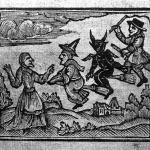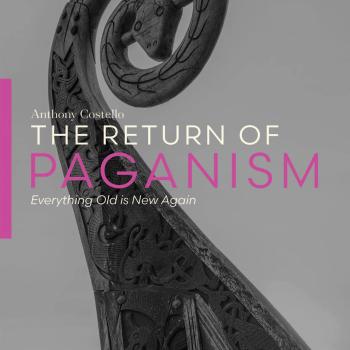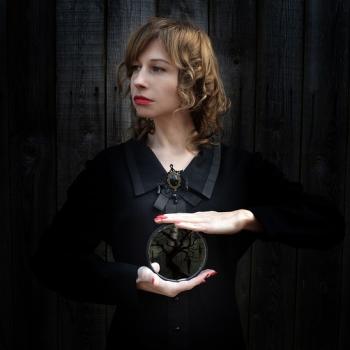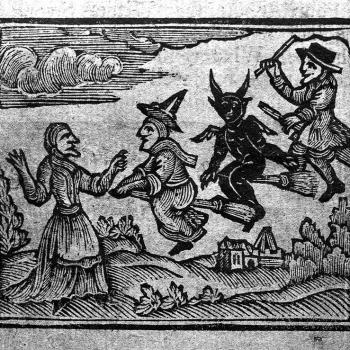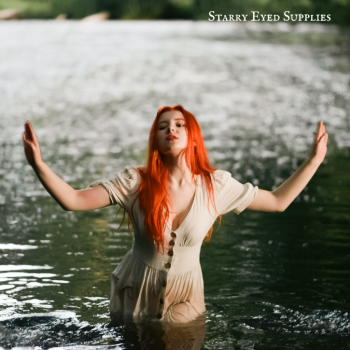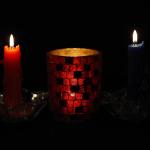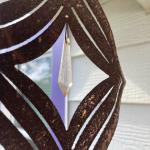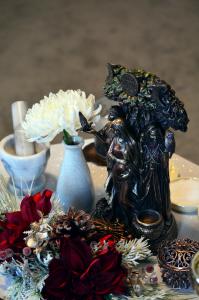
What is a Pagan Altar, really?
Pagan or Witch altars are some of the most evocative images out there that get people interested in what a pagan practice might entail.
Do you remember when you were new to the path and all of those images of altars really spoke to you, on a soul level? You weren’t sure exactly why but… wow they were magical!
Or perhaps you’re new to the path and have that excitement right now, and have started reading everything you can get your hands on to understand that spark within yourself.
Altars are also a hotly debated topic.
Some claim there are ‘rules’ on how to set one up – which tends to be the case in Wiccan practice – with the location of the altar, the accoutrement, the statues and so on, all having to be “just so.”
Some claim you should never show your altar, and some say that’s hogwash.
But what does it all mean, Basil?
Well, let’s delve into a Celtic Witch perspective when it comes to what an altar is!
Altar not alter (and why spelling matters.)
So “to alter” is a verb which means to change something. It is an action, a movement of something.
An altar (noun) is a physical place used in religious ceremony (by its general description.)
Depending on which word you are using, there is a very different meaning. No shame in getting it wrong, but it’s worth knowing!
What is an altar?
The way I have come to describe an altar is this:
“An altar is a space that honours your relationship with the Divine (God/Goddess/Universe/Spirits.)”
I think it’s important that your altar should reflect YOU as well as the path that you’re walking, and the spirits/Gods that you’re working with.
Much of the initial information I came across in my early days never really touched on the personal aspect of an altar, they often gave “appropriate” guidelines as to colours for certain seasons and spirits – which is all well and good, but it doesn’t allow for a person to listen to their intuition.
If a person is absent from their own altar, then how are they supposed to connect to that space? It’s missing a part of their spirituality – a reflection of who they are currently.
Altar versus Shrine
If an area is dedicated to a certain God or Goddess, or certain spirits, then that is more of a shrine than an altar. This is still a sacred place of worship, but it is entirely dedicated to the spiritual realm. It is meant to be a reflection of them alone.
You can absolutely have shrines and altars in your own space. You still would perform spiritual rites at a shrine, but it would be solely for that spirit – an offering, a cleansing, a dedication (for example.) These are acts of service for that God or Goddess or Spirit.
An altar is a space to perform magic and spiritual rites, that include yourself. Seeking messages from spirits, and their aid. Performing spells to help and heal you throughout your spiritual life here on earth (and even after.)
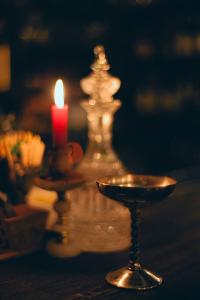
Wheel of the Year
Having an altar that changes with the year is quite popular, and helps people to connect to the festivals, should they wish to celebrate them.
Many of the celebrations have a Celtic background, and thus I personally do celebrate them – even if the current information on the wheel is more modern and separated from agrarian life. Once again, your path is your own, and you should only celebrate (and create altars) if you feel called to do so.
The wheel of the year is perhaps focused on a little too much, and you might experience burn out with it at some time in their path.
It is worth noting that you are not obligated to celebrate every festival, nor does it make you a “bad pagan/witch” if you don’t.
I struggled with Lughnasadh for a long time, until I started creating the Celtic Calling – Sabbat course which helped me to discover Tailtiu, an ancient grain Goddess of the Celts (and Lugh’s stepmother.)
But the important part of seasonal altar decoration is – what is happening in nature around you?
The wheel of the year is, by design, European-centric. If that doesn’t apply to where you live, it is easy to feel disconnected from it. So celebrate what the natural world is doing where you are. Adding natural elements from outside is the easiest way to do this!
Colour magic
So another thing that affects how your altar looks and feels is colour.
The easiest way to do this is with an altar cloth, which can be cheap and easy – it doesn’t need to be an elaborate silk affair (especially if you’re using candles. They drip!)
Scarves, odd bits of material, charity shop finds… material is easy to find and protects whatever you’re using as a base.
That being said… we all interact with colour differently. We all see colour slightly differently… so it follows that we feel about colours differently.
Red means stop. Or passion. Or grounding. Or danger. Or roses. Or love.
See how quickly a meaning can change? Colour magic is a fantastic place to start with spell work and altar building… but it has to mean something to you specifically.
Altar mess
So another thing which people don’t like to show on highly stylized imagery – altars can get messy. Especially when you’re creating a spell that lasts a longer period of time.
Shrines tend to stay pristine (to honour that spirit,) but altar work is sometimes messy and complex. It matters more that the spell works, than what it looks like.




